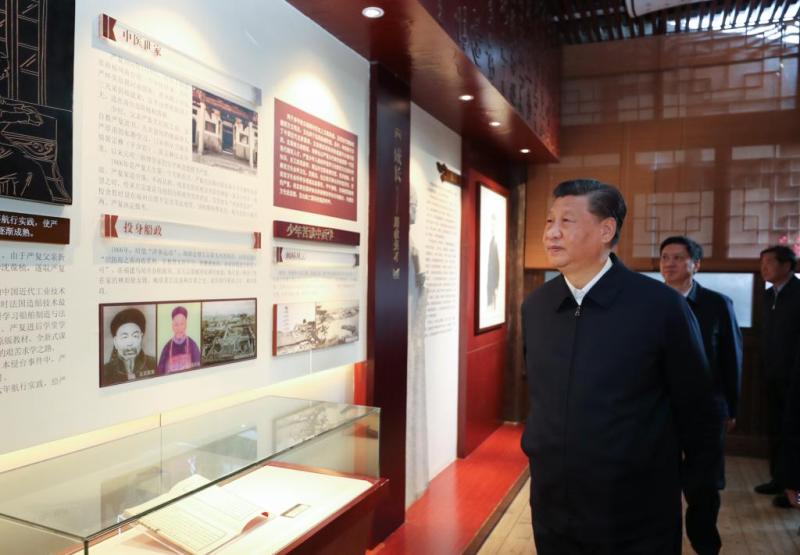The thousand-year-old temple bears witness to the history of national unity and progress
On the afternoon of the 18th, General Secretary Xi Jinping, who was inspecting Qinghai, came to Hongjue Temple in Xining City to learn about the Tibetan Buddhist community's efforts to promote the fine tradition of patriotism and love for religion and to promote national unity and progress.
Hongjue Temple is a Gelugpa temple of Tibetan Buddhism with a long history of more than 1,000 years. This thousand-year-old temple has witnessed the process of cultural exchange and integration between Han and Tibetan cultures.
The origin of Hongjue Temple can be traced back to the most well-known "hand-in-hand" in the history of the Han and Tibetan peoples. In the 7th century AD, Princess Wencheng married Songtsen Gampo and built an earthen altar as a throne for the life-size statue of Sakyamuni Buddha at the age of 12 when they passed through Xining.
In the 10th century, Laqin Gongba Raosai founded Hongjue Temple on the site of the earthen altar of Princess Wencheng. During the reign of Emperor Qianlong of the Qing Dynasty, the Sixth Panchen Lama traveled east at the invitation of Emperor Qianlong and stayed in Ta'er Monastery and Hongjue Temple in Qinghai for 5 months. Since then, Hongjue Temple has become the residence and Dharma propagation place of successive Panchen Lamas in Qinghai.
For thousands of years, Hongjue Temple has stood quietly in a major town on the Han-Tibetan transportation route, witnessing the grandeur and prosperity of the Ancient Tang-Tibet Road, listening to the rumble of carriages and horses on the Silk Road, wafting the lingering fragrance of tea on the Ancient Tea-Horse Road, and engraving the glorious history of thousands of years of exchanges and the mark of unity among the Han, Tibetan, Mongolian and other nationalities.
This thousand-year-old temple bears witness to the Tibetan Buddhist tradition of patriotism and love for religion.
During the War of Resistance Against Japanese Aggression, the 9th Panchen Lama and the 5th Jamyang Living Buddha donated 36 aircraft and 300,000 silver dollars for the fight against Japan. Their patriotic actions deeply moved and inspired the people of all ethnic groups living in Qinghai and Tibet, actively promoted anti-Japanese actions in all sectors of society, and demonstrated the patriotic and religious spirit of Tibetan Buddhists.
After the founding of New China, in May 1951, the "Seventeen-Point Agreement" on the peaceful liberation of Tibet was signed, and Tibet was peacefully liberated.
In December of that year, with the care of the older generation of revolutionaries, the 10th Panchen Lama and his entourage set out from Xining to return to Tibet. Hongjue Temple was the starting point of this important journey.
After returning to Tibet, the 10th Panchen Lama made unremitting efforts and made significant contributions to safeguarding the unity of the motherland, enhancing national unity, and promoting unity within Tibet.
In June 2015, when General Secretary Xi Jinping received an audience with the 11th Panchen Lama, he expressed the hope that the Panchen Lama would inherit the glorious tradition of Tibetan Buddhism of patriotism and love for religion, keep the motherland in mind, care about the people, and unswervingly safeguard the unification of the motherland and national unity.
Entering the new era, Hongjue Temple has always adhered to the direction of Sinicization of Tibetan Buddhism, constantly excavating and enriching the contemporary connotation of Sinicization of Tibetan Buddhism, and guiding believers of all ethnic groups to continuously enhance their identification with the great motherland, the Chinese nation, Chinese culture, the Communist Party of China, and socialism with Chinese characteristics. In December 2021, Hongjue Temple was named the "Qinghai Province National Unity and Progress Education Base".
This thousand-year-old temple on the Qinghai-Tibet Plateau has witnessed the history of national unity and progress, and in the new era it is witnessing a new chapter in forging a strong sense of community for the Chinese nation.





